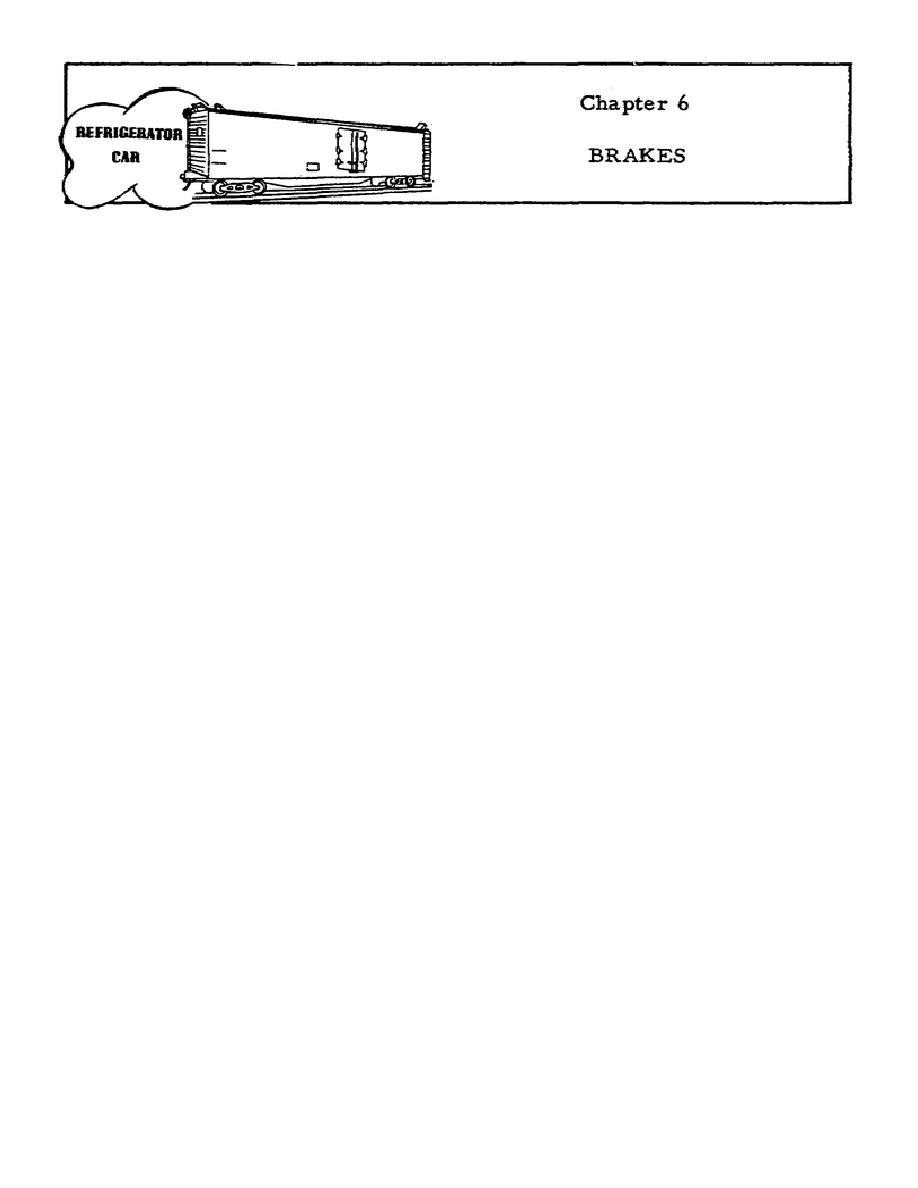
6.1. INTRODUCTION
All railway cars are equipped with a braking system that can be operated by a compressed air supply from
the locomotive or by hand. When cars are coupled together and then to a locomotive, the locomotive engineer
can operate the airbrake system on all the cars from his cab. He can regulate the braking pressure for gradually
slowing the train or, in an emergency, he can apply full pressure to stop the train as quickly as possible. The
conductor, riding in the caboose, has a valve with which he can apply emergency pressure to the braking
system.
Handbrakes, however, are necessary because cars are not always connected to a locomotive and
consequently have no source of air pressure to work the airbrake system. Cars sitting on sidings waiting to be
repaired, loaded, or unloaded can have their brakes applied manually by operating the handbrake. When cars
are being switched in a yard, they are often pushed by a switch engine until they gain momentum. Then, when
they are rolling free, yard crewmen can use the handbrake to control their speed and stop them when necessary.
What kind of equipment is used to perform these braking functions? Section I explains the equipment and
operation of some of the more common airbrake systems, and Section II describes the handbrake.
Section I. Airbrakes
6.2. GENERAL
In this section, three types of airbrakes are discussed: the straight airbrake, the KC system, and the AB
system. Several other variations of airbrakes are in use, but these three are the most common types. Each type
is discussed in the order mentioned.
73



 Previous Page
Previous Page
